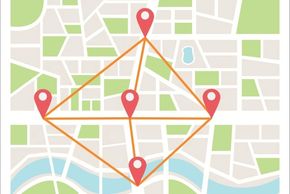Clarify Your Mission / Renew your Vision
Clearly, if we do nothing, we are assuring the further withering and eventual death of our local churches, and by extension, our denomination. We are not alone in this.
All the other “old mainline” churches are in the same boat. Even the newer, evangelical churches (many of whom are larger and have more resources) are likewise facing the coming “calm after the storm” with similar uneasiness about a “new normal.”
(In addition, they will likely have the legacy of being tied to a political movement as well that will surely effect their future.) A few “missional” guidelines are in order.....
• Above all, the church must be a place of spiritual vitality as well as “ministry. Too often ministry has devolved into “busy activity” with no intentional spiritual component. People get burned out and church becomes more a duty, a “chore” rather than a calling.
• Networking and Teamwork not only gives a seat at the table for various viewpoints but assures that they come to the table to work together, and not to simply disrupt or dominate. Such horizontal connections (as opposed to vertical) catch the spirit of the times and return us to the deeper social character of the Christian movement.
• The pastor will need to develop the role of the “mid-wife” in many areas, if they have not done so already. From Personal Spiritual journey/Faith Building, to shared leadership in the congregation, to communicating an environment of humble wisdom and knowledge, the pastor needs to beckon the faithful forward, out of their comfort zone and not be a standard bearer expecting followers to fall in line.
Gather your leaders and lay out the timeline / vision of the next few months:We've given a golden opportunity to get everyone on the same page regarding the purpose and mission of the church.
The World is hungry for meaning and exceptionally lonely after this time of enforced isolation.
What can we say to them about the Gospel that will transform their lives?
In Mark 1:15 Jesus says: "The time is fulfilled, and the kingdom of God/Heaven has come near!..."
Heaven then becomes a reality for us with the Resurrection.
We are all invited to the banquet, RIGHT NOW!
We are given Citizenship in Heaven. (Phil 3:20)
The Church, the "body of Christ", is the physical presence of heaven in our world. Granted, it's not a prefect representation, more like the "porch" of Heaven.
God's gracious, forgiving and unconditional love has granted us "citizenship" even now.
Everything we now do is shaped by that awareness that we are living with one foot in heaven even as we continue living with one foot in our world.
So, gather your leadership and go over the core values of the church and remind them that they are already Citizens of Heaven (Phil. 3:20) so that no matter what fears and dangers they face, we belong to a higher reality than our physical world around us.
A time of shared Visioning is essential guided by theological ideas and processes. This can be a time of challenge to all church leaders and a time of rebuilding the faithful covenant community around the core strengths of the Christian faith.











